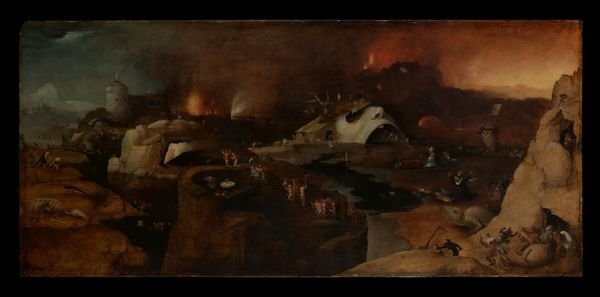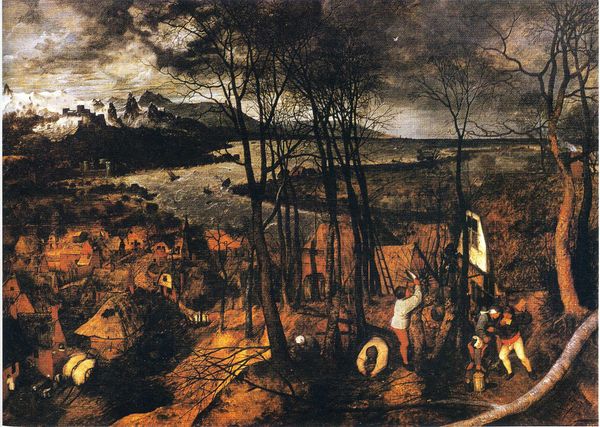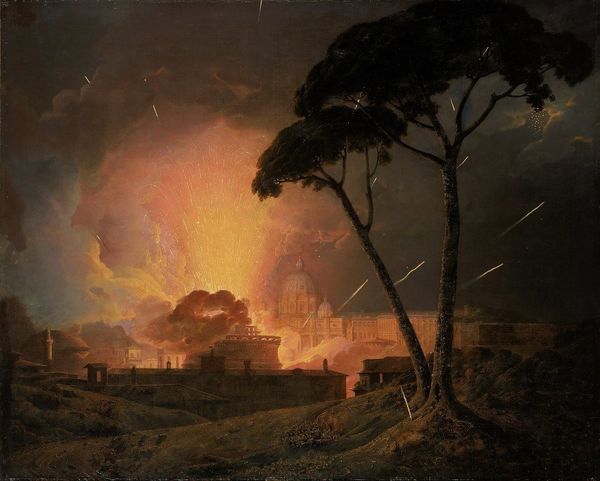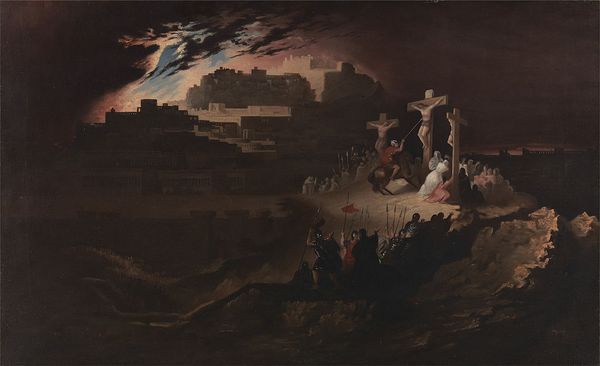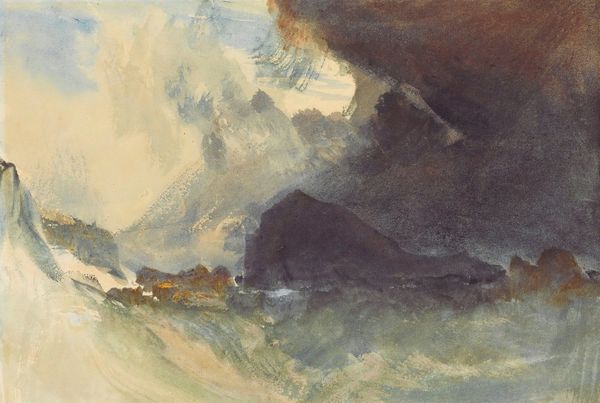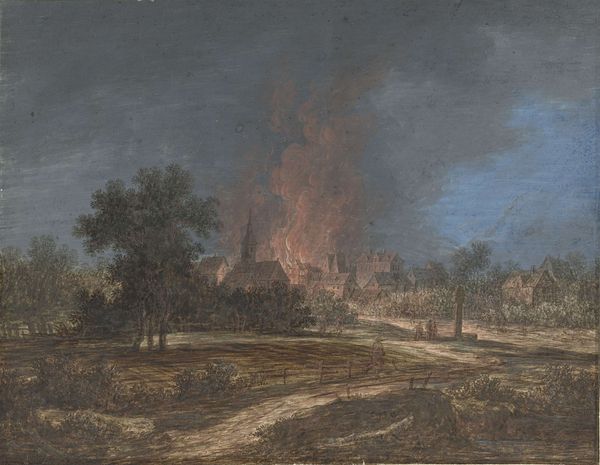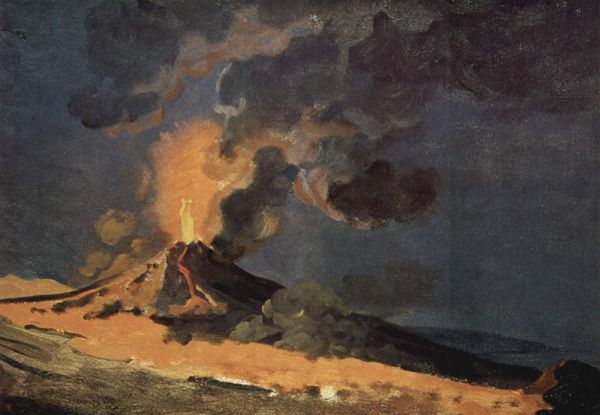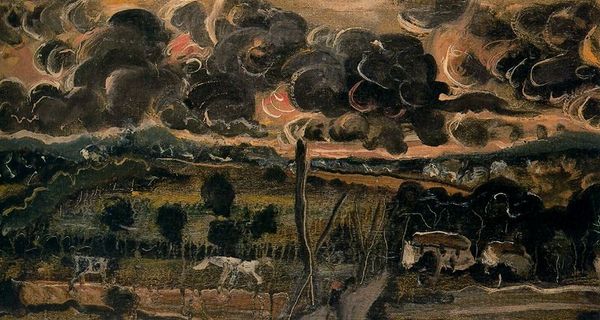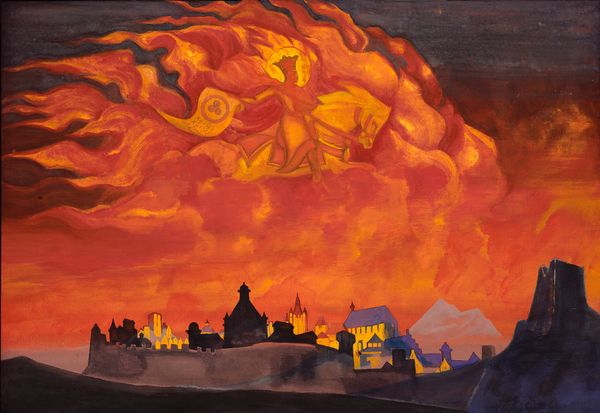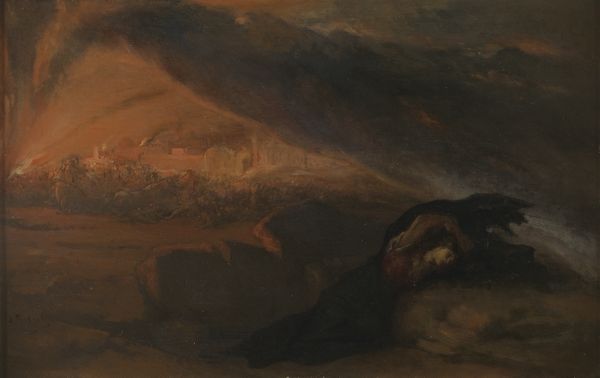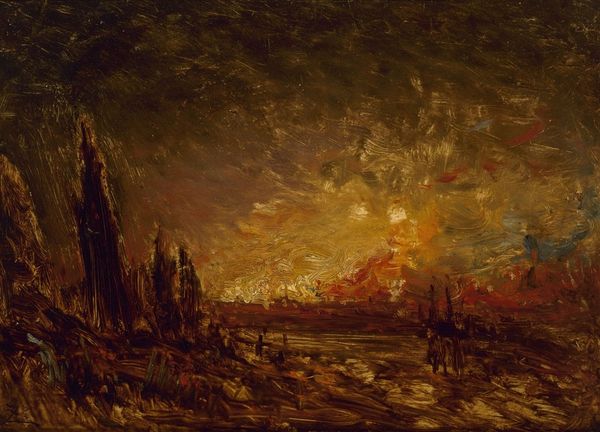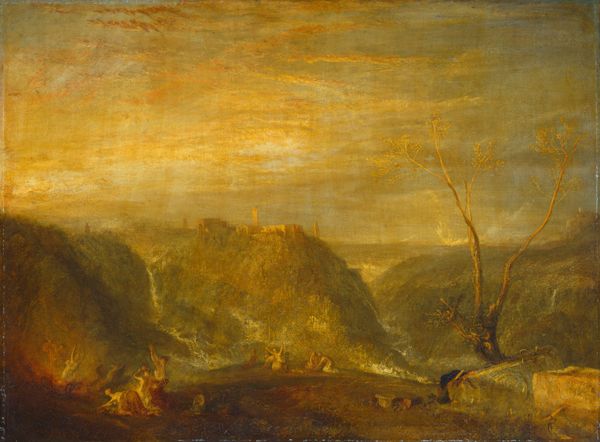
Landscape with the destruction of Sodom and Gomorrah 1520
0:00
0:00
painting, oil-paint
#
medieval
#
allegory
#
painting
#
oil-paint
#
landscape
#
figuration
#
oil painting
#
rock
#
history-painting
#
northern-renaissance
#
realism
Dimensions: 23 x 29.5 cm
Copyright: Public domain
Editor: This is "Landscape with the Destruction of Sodom and Gomorrah," painted by Joachim Patinir around 1520, using oil paint. The scene is dominated by a fiery sky, contrasted by the serene figures in the foreground. What historical contexts should we consider when looking at this work? Curator: This painting really reflects the socio-political anxieties of the time. The Northern Renaissance, where Patinir was working, saw increasing urbanization coupled with religious upheaval due to the Reformation. Images like this, depicting divine punishment, acted as potent moral warnings. How do you see that playing out in the composition? Editor: I notice the stark contrast. In the background there's complete chaos with cities ablaze, while in the foreground we see Lot and his daughters seemingly untouched, even peaceful. Is this intended to highlight the importance of piety in turbulent times? Curator: Precisely. Patinir places the viewer in the position of witness, asking us to consider our own moral standing. Consider the visual weight he gives to the landscape itself; it dominates the scene, making the biblical narrative a part of the everyday world. How does the display of this painting affect its reception in our contemporary setting, do you think? Editor: In a museum, removed from the immediate religious context, it becomes more about contemplating human history and the potential consequences of our actions on a larger scale, doesn't it? Curator: Absolutely. The artwork transcends its initial didactic purpose and enters into a broader dialogue about human nature, divine justice, and the cyclical nature of history. I find this work fascinating on so many different levels. Editor: This conversation reframed how I viewed Patinir's artistic choice, as now I recognize how its initial interpretation aimed to provoke thought and still prompts reflection today.
Comments
No comments
Be the first to comment and join the conversation on the ultimate creative platform.

